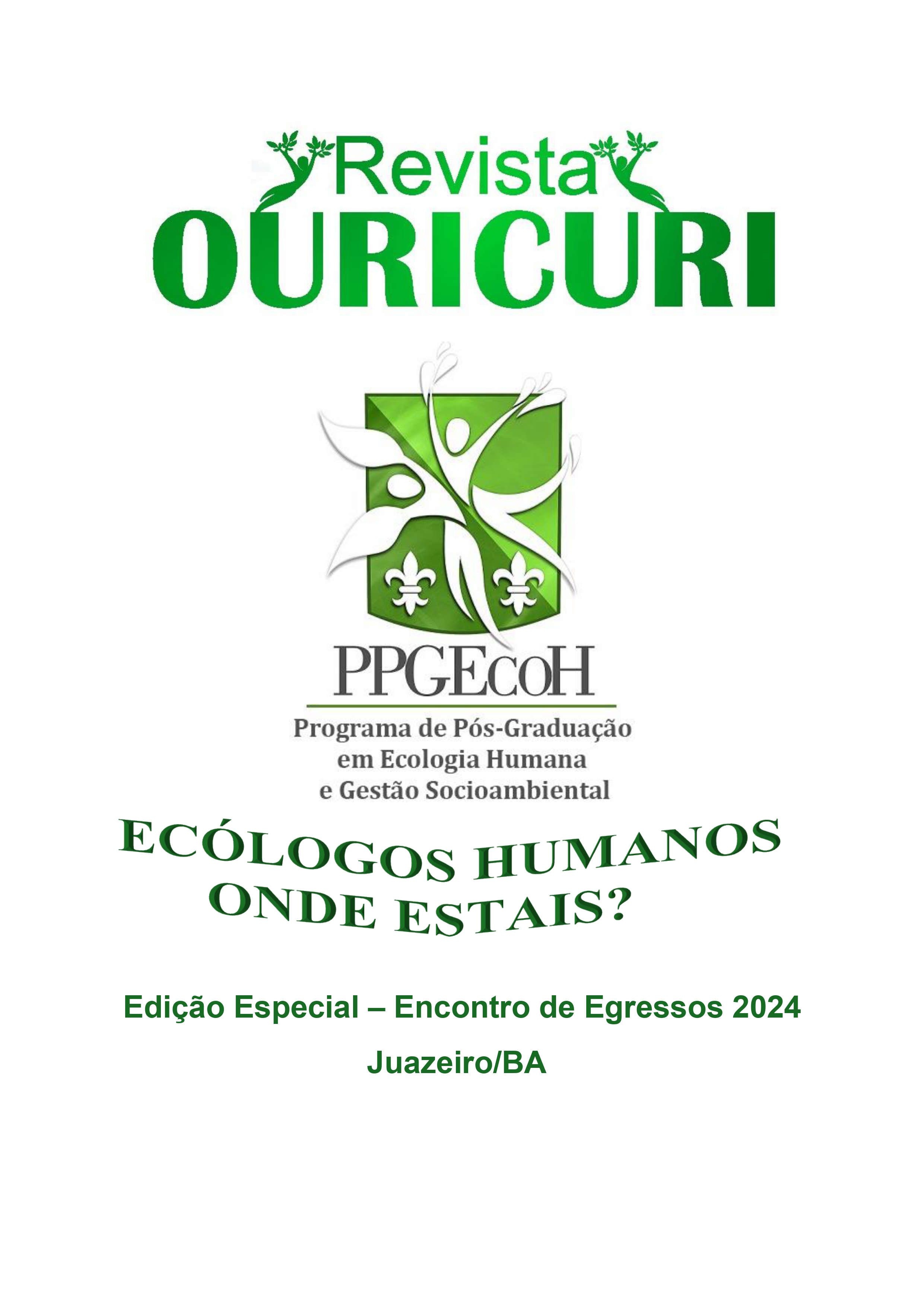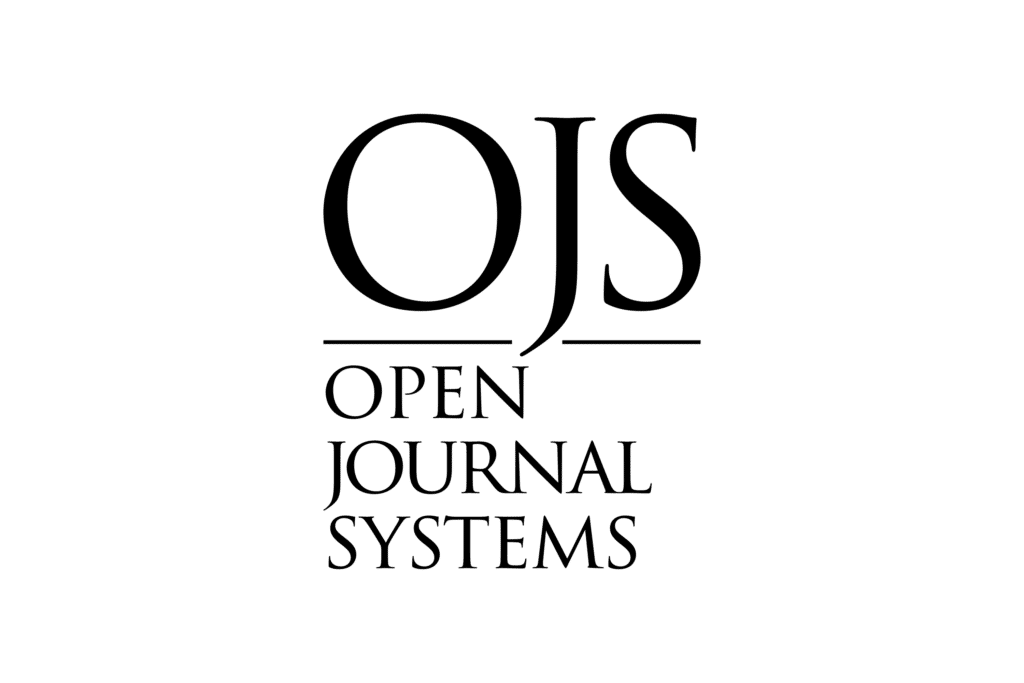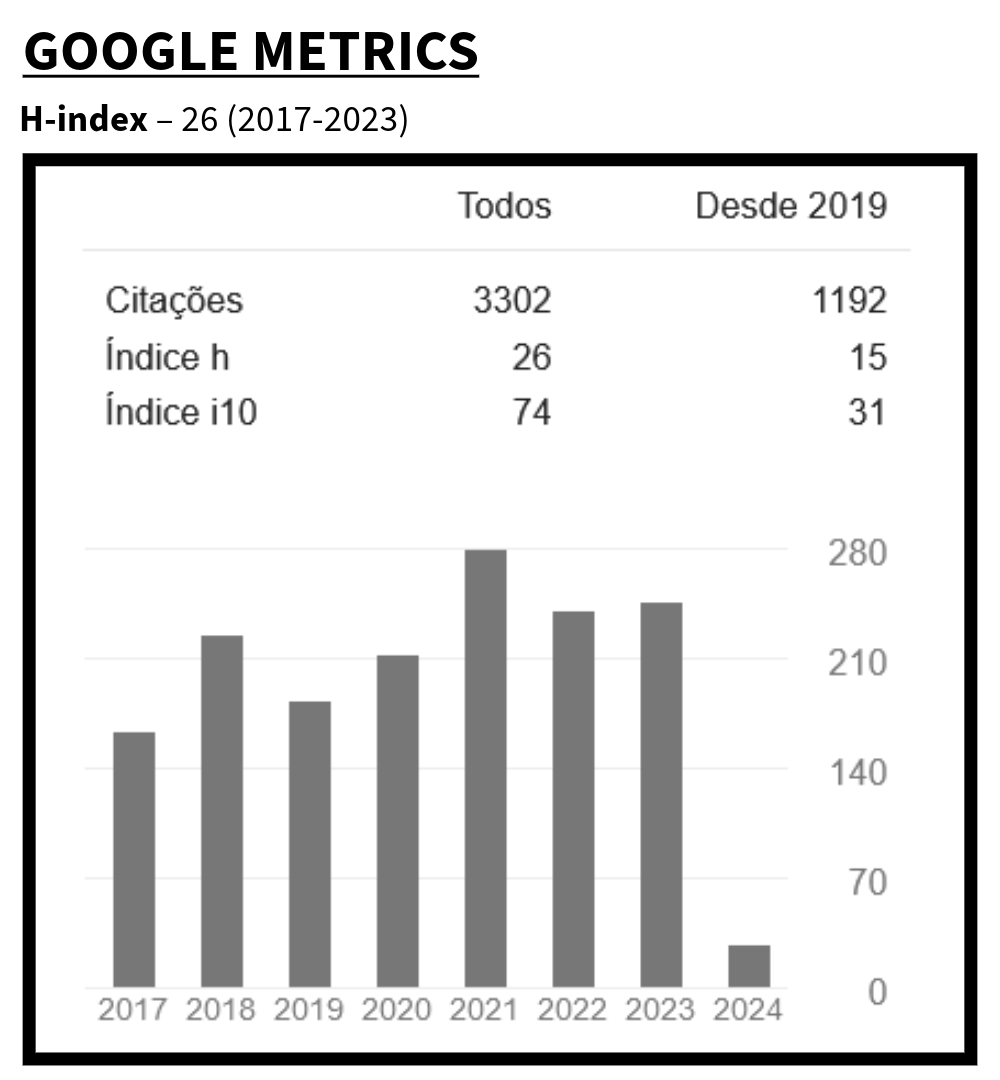Desertification process and loss of Biological diversity in the Brazilian Semi-arid region
DOI:
https://doi.org/10.59360/ouricuri.vol14.iedicao-especial-02.a22528Keywords:
Dryland Degradation, Fauna, FloraAbstract
The process of desertification is the degradation of land in the arid, semi-arid and dry sub-humid regions of the planet as a result of climatic characteristics and/or anthropogenic practices. This process of land degradation is caused as a result of human actions combined with natural and climatic features that intensify the severity of desertification. In general, the desertification process is caused by the exploitation of natural resources, inadequate land use practices for agricultural production and animal husbandry (overgrazing and excessive cultivation), combined with short-sighted regional development models without the planning and management of natural resources. Various factors contribute to desertification, including inadequate agricultural practices, deforestation, soil infertility and compaction, erosion and salinization. This paper discusses the loss of biodiversity in the Caatinga biome in areas affected by or developing desertification, as well as the environmental legislation that governs the preservation of environmental resources in Brazil. The results show that several species of fauna and flora are at serious risk from the environmental degradation of the Caatinga biome. It is important that public policies build knowledge about the environmental, social and economic importance of preserving the Caatinga in order to reverse the situation of degradation and contribute to preserving the remnants. The climatic characteristics of Brazil's semi-arid region, with high temperatures, short periods of rainfall and sparse vegetation, contribute to the process of soil degradation. These characteristics, together with the exploitation of human activities, greatly contribute to the areas of the Brazilian semi-arid region losing productivity or becoming unproductive. Other severe losses are to the biome's biodiversity, which affects everything from the soil to the vegetation and fauna.
Downloads
References
Accioly, L. J. O. Degradação do solo e desertificação no Nordeste do Brasil. B. Inf. SBCS, 25:1:23-25, 2000.
Brasileiro, R. S. Alternativas de desenvolvimento sustentável no semiárido nordestino: da degradação à conservação. Scientia Plena v. 5, n.5, p. 1-12, 2009.
Brasil. Ministério da Educação. Secretaria de Educação Continuada, Alfabetização e Diversidade. Formando com-vida: construindo Agenda 21 na escola. Brasília: MEC, 2004.
Brasil. Constituição da República Federativa do Brasil. Brasília, DF, Senado, 1998.
Brasil. Lei Federal 6.938/81. Política Nacional de Meio Ambiente, 1981.
Brasil. Lei n. 13.153/2015. Política Nacional de Combate à Desertificação e Mitigação dos Efeitos da Seca. Brasília, DF, 2015.
Brasil. Lei n. 9.605/1988. Dispõe sobre as sanções penais e administrativas derivadas de condutas e atividades lesivas ao meio ambiente, e dá outras providências, 1998.
Fernandes, J. D.; Medeiros, A. J. D. Desertificação no Nordeste: uma aproximação sobre o fenômeno do Rio Grande Norte. Holos, n. 25, v. 3, 147-161, 2009.
Leal, I. R.; Silva, J. M. C.; Tabarelli, M.; LachER, T. E. Mudando o curso da conservação da biodiversidade na Caatinga do Nordeste do Brasil. MEGADIVERSIDADE. v. 1, n. 1, p. 139-146, 2005.
Nascimento, J. L., Campos, I. V. Atlas da fauna brasileira ameaçada de extinção em unidades de conservação federais. Brasília: Instituto Chico Mendes de Conservação da Biodiversidade, Icmbio, p. 276, 2011.
Queiroz, L. P.; Rapina, A.; Giulietti, A. M. Rumoao Amplo Conhecimento da Biodiversidade do Semi-árido Brasileiro. Brasilia, p. 19-141, 2006.
Souza, B. I.; Menezes, R. Artigas, R. C. Efeitos da desertificação na composição de espécies do bioma Caatinga, Paraíba/Brasil. Investigaciones Geográficas Boletíndel Instituto de Geografía. n. 88, p. 45-59, 2015.
Tabarelli, M.; Leal, I.; Silva, J. M. Ecologia e conservação da caatinga. Recife: UFPE, 2004.
UNCCD. United Nations Convention to Combat Desertification, Intergovernmental Negotiating Committee For a Convention to Combat Desertification: Elaboration of na International Convention to Combat Desertification in Countries Experiencing Serious Drought and/or Desertification, Particularly in Africa. U.N. Doc. A/AC.241/27, 33 I.L.M. 1328. New York: United Nations; 1994.
Published
How to Cite
Issue
Section
License
Copyright (c) 2024 Ouricuri Magazine

This work is licensed under a Creative Commons Attribution 4.0 International License.
Authors who publish with this journal agree to the following terms:
a. Authors retain copyright and grant the journal right of first publication with the work simultaneously licensed under a Creative Commons Attribution License that allows others to share the work with an acknowledgement of the work’s authorship and initial publication in this journal.
b. Authors are able to enter into separate, additional contractual arrangements for the non-exclusive distribution of the journal’s published version of the work (e.g., by posting it to an institutional repository or publishing it in a book), with an acknowledgement of its authorship and initial publication in this journal.
c. Authors are permitted and encouraged to post and distribute their work online (e.g., in institutional repositories or on their website) at any point prior to and during the editorial process, as it can lead to productive exchanges, as well as earlier and greater citation of published work (See The Effect of Open Access).













 B1 (2017-2020)
B1 (2017-2020)


















